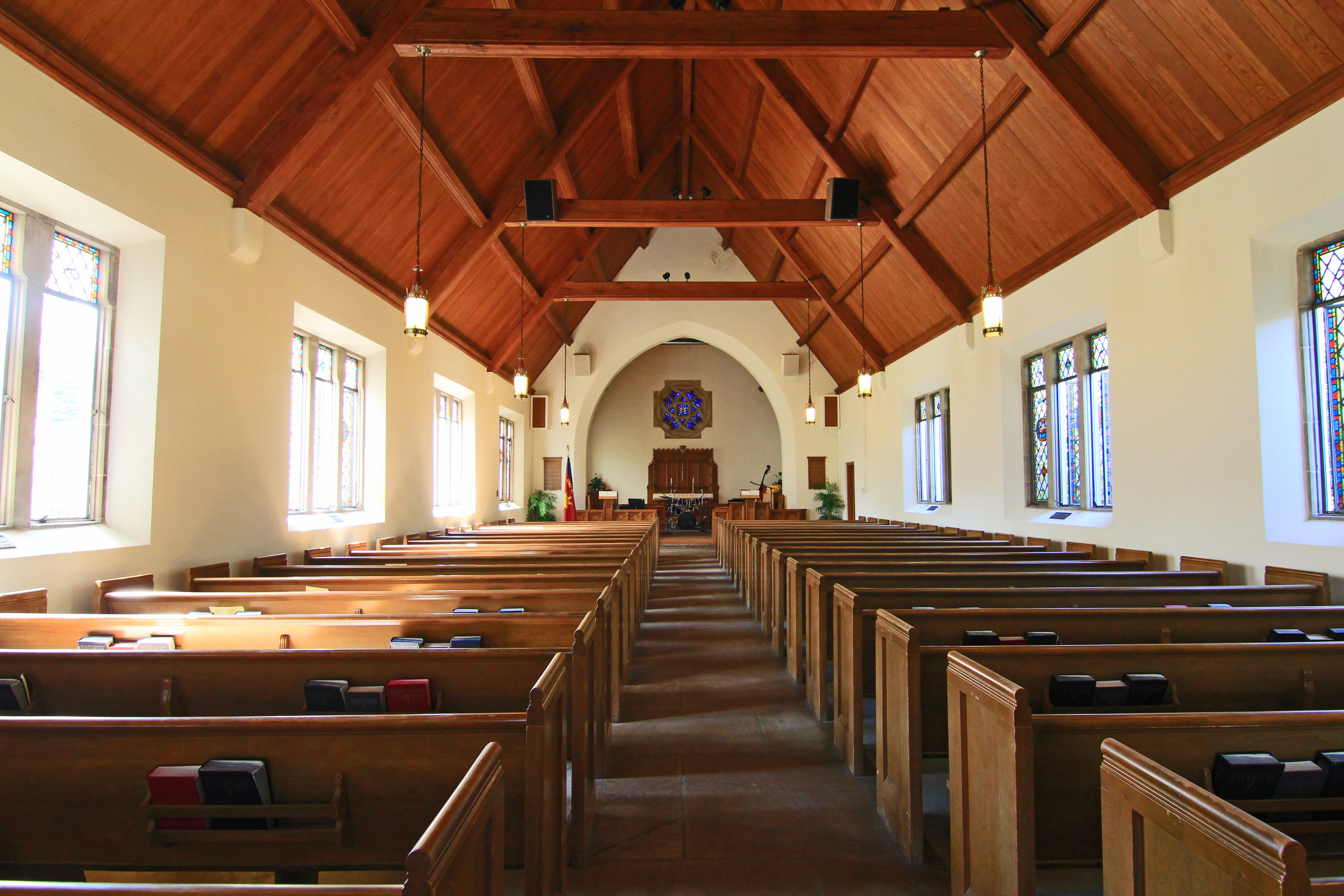Sorting Out Thoughts on Reopening (Part 2)

See Part 1 for my initial thoughts on reopening church. As of May 25th, 2020 - the California Department of Public Health has released initial guidance for providers of worship services. The guidelines are posted here . Los Angeles County Department of Public Health’s Protocols are available here .
Summary of Public Health Policy Expectations
These are some of the most notable guidelines from the aforementioned released policies:
- 25% building capacity or 100 people - whichever is lesser (What is the building capacity for the church?)
- Physical distancing at least six feet – many accommodations must be made to enable this to occur reliably and consistently
- Minimize singing or do it outside if “necessary”. (Singing is anecdotally one of the most notorious means of transmission .)
- Regular disinfection and hand washing
- Training for staff and volunteers
- Temperature and health screening for staff and congregants/visitors
- Face coverings worn
Some Background
My multi-generational household is uniquely vulnerable to this disease. On one end of the spectrum we have young children (2,4) - a demographic that is notorious for being a vector for communicable disease. They’re constantly doing ridiculous things like licking their own hair, hands, and toes. And on the other spectrum we have someone in the home who is > 60 years old - a demographic that is typically associated with being at much higher risk of COVID-19 complications.
With all that in mind here are some of my initial thoughts on moving towards something that resembles in-person services.
Note: I’m not going to use the phrase “return to normal” because I think it is entirely plausible that “normal” is going to be totally different from here on out — AND that should not necessarily be viewed as a bad thing. God has plans bigger than us and it’s possible that those plans could include disrupting the status quo of our country’s building-centric church culture. Furthermore, the idea of “returning to normal” can be quite damaging to someone who has experienced loss or pain as a result of COVID-19 - for those who know any one of the 100,000 people who have died - their grief is their new normal and projecting a desire to rapidly return to “normal” can come across as dismissive.
Concerns
Singing
As I mentioned before, singing has been tied to viral transmission in other places - in any phase that involves some in-person activity, consideration and outside medical expertise should be considered depending on the plans we go with, to ensure that we are appropriately mitigating risk.
Children and Church
One constant throughout all of the phases I will describe: until there’s a vaccine, I can’t (yet) imagine how the Children’s ministry could possibly reopen in a way would allow me as a dad to feel safe. Kids are difficult to control, while they may understand physical distancing they can’t be expected to manage it entirely on their own. The burden on volunteers and staff would be immense to train, clean, and ensure that everyone is comfortable and safe. That’s not to say that it’s not possible, I just am having a very difficult time conceiving of how it could work.
Staff and Volunteer Resourcing
Deep cleaning, sanitation, and signage will surely be a huge and ongoing effort. Door handles, bathrooms, pews, mics, communion elements, mic stands, the list goes on. It would seem to me that the more we meet indoors, the greater the effort that must be expended to maintain and sanitize the facility. Furthermore, most recommendations are to meet outdoors if at all possible to reduce risk of transmission. Therefore many of my thoughts are to try and find ways to minimize or very slowly phase into in-person meetings if at all possible so that we can be as safe as possible, and ensure we can effectively run the sanitation processes necessary in a scalable way.
Given my context and some of my concerns, I offer the following thoughts on return phases.
Phase 0 - Online Pre-Recorded Services
Goals for P0
- Significantly reduce the possibility of viral transmission
- Significantly reduce danger to at-risk demographics
- Maintain continuity of church community
- Encourage the saints
This is where we are currently at.
Do we have any gauge on how well our current services are doing at supporting and encouraging the congregation? How are our efforts, beyond the recorded service, to maintain connection and community working? We should also consider surveying the congregation to better understand how they are feeling: depressed and isolated, itching to return to in-person services, cautious and concerned, all of the above? This kind of information could help inform the pace at which we consider moving to the next phase.
I think these questions are relevant because I believe that pre-recorded (or live streamed) services are going to be a feature of church for at least as much time as it takes to get a valid vaccination for COVID-19 available.
One observation that I have in this phase is my own sense of “Zoom fatigue” . As we continue on in this phase, are others in the congregation feeling this? How can we best combat it, in order to support those feeling isolated or without community?
Phase 1 - Augmenting Pre-Recorded Services
Goals of P1
- Continue to support concerned congregants and at-risk demographics
- Safely offer support and community engagement with those who are willing to meet in person for encouragement
- Begin experimenting with livestreaming the service
Continue pre-recorded services as currently done in Phase 0. Some ideas to support safe in-person engagement – hosting physically distant car rallies (as capacity allows) in the church parking lot for limited groups on a sign-up basis. The event could be done on a monthly or bi-weekly basis - could be structured similarly to how the church’s “Concert of Prayer” events have been – with modifications as needed.
Benefits of this approach:
- Minimizes risk by being outdoors
- Reduces sanitation burden on staff
- Provides an opt-in outlet for those who are willing and able to physically get to church
One con I could think of:
- There may be older congregants who would want to participate but are unable to drive themselves to this kind of event.
One other note: Congregational singing is something we will have to think very carefully about and potentially consult medical professional on further - specifically, is it possible to be physically distant in cars and still be at risk of transmission?
Thoughts on Viewing Parties
One idea that I have seen discussed for this phase is to encourage and support “viewing parties” for worship services. This could work for some, but for our family is not something that we’re ready to participate in.
Phase 2 - Parking Lot / Live Stream Hybrid Services
Goals of P2
- Enable a subset of the congregation to worship in-person on the church’s property
- Continue to support concerned congregants and at-risk demographics
- Safely offer support and in-person engagement with those who are willing to meet in person
If staff and volunteers are ready, you could substitute “Parking Lot” with “Sanctuary”. The idea here is to transition to livestreaming the worship service AND offer a monthly (or some other time increment) service that a limited number of people can sign up for to attend in person. All other congregants are encouraged to watch from home.
Benefits of this approach:
- Livestreaming will help improve the sense of communal experience of worshiping together as opposed to the experience of semi-communally watching a pre-recorded service
- Only doing ONE in-person service with attendees can help us understand how much work it is going to be to support in-person services and reduces risks of viral transmission and exposure
- Only requires volunteers and staff to be in person once per month. In the case of worship leaders, there are currently three worship leaders in rotation - this would allow worship leaders to rotate the in-person service and therefore also reduce their risk of exposure to once every three months.
Phase 3 - ???
It is very difficult for me to imagine a phase like this WITHOUT a scientifically vetted and verified vaccine. I think it’s very possible that we could be in some variation of Phase 2 for as long is at may take to get a vaccine.
Other Thoughts
Regardless of whatever phased approach we end up agreeing on, I believe it is imperative that we do the following:
- Act, speak, and plan with love for God and love for neighbor as grounding values.
- Enable and ensure that the decisions that individuals and family’s will make are respected - some may not feel comfortable for some time, others are ready now. Giving people the freedom/permission to make these decisions without a sense of judgement is important.
- Communicate! We must ensure that at ever level we communicate our plans clearly - from the overall phases, to building capacity, to requirements for those who may come to an in-person service (masks? temperature checks?), to signage and markings to promote physical distancing.
